Audio
1 note
·
View note
Text
My Best Day
So, I was really excited to do this project because I rarely ever take a whole day just for pleasure and fun. I’m the kind of person who always wants to fill my time with something productive or something that’s bettering me somehow. I had my best day on Easter break and to be honest, if this wasn’t a project for school I most definitely would have spent the day working at my two jobs, doing homework, and working out. I’m really happy that this became something intentional because I think spending time to just slow down and relax was very healthy for me (something I need to consciously do much more).
So, I started my day around 7 waking up to my beautiful cat next to me purring like heaven’s harp. Also, a lovely sunrise over the trees!
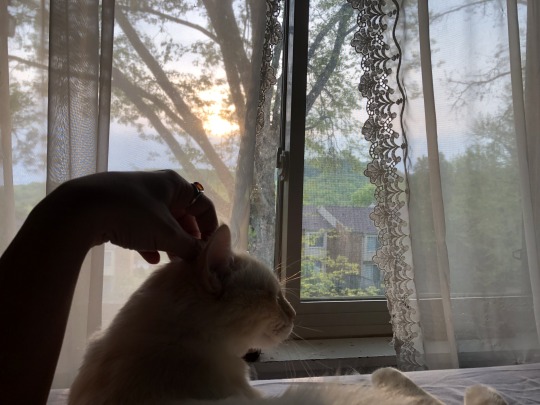
I always like to wake up with a few songs playing on my speaker because it gently wakes me up and helps me to feel alive again. I played Feels like Summer by Childish Gambino as I made my bed (cuz I’m conscientious) and got dressed. This song is BEAUTIFUL. Plz listen (if you wish). It was the dreamiest song to wake up to and the lyrics are really beautiful as well. One part of the song I felt really resonated with my theme of slowing down on this day:
Men who made machines that want what they decide 🎶 Parents tryna tell their children please slow down 🎶 Slow down 🎶
I looked up the lyrics on genius to discover a deeper meaning to them and when I clicked on these lines, this popped up:

Maybe I’m oppressed in the sense of adhering to the capitalistic notions of always being “productive” - A lot of things I do I really enjoy and do to better myself but I was happy to finally have unbothered time to engage in my imagination and child-like playfulness.
After getting dressed I went to get a haircut. This was one of the first things that popped into my mind a few weeks ago when I was thinking about what to do for my best day, but I was somewhat concerned because I felt that getting a haircut may be just an activity to achieve beauty, one of the three happiness myths Sonja warns us not to fall into. However, once I really thought about it i realized I didn’t want to get a haircut to achieve beauty (minus executing these split ends) but to just take care of my body and relax. Especially when in school, I’m always either doing homework or working and I have so little time to just take care of myself that I end up feeling like a salted slug (gross, in layman’s terms). Though getting a haircut is not technically a part of the happiness activity of taking care of your body, I’d like to think of it as one, because it gave me the same effect. Plus, everybody knows the head massage is the best part, duh. And once I was done my hair felt like it was crafted by silk worms.
Here’s my before and after pics:
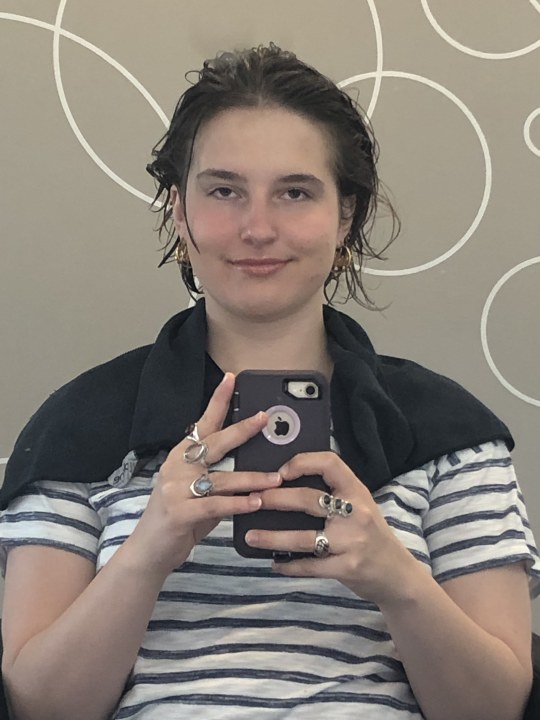

There’s really no noticeable difference, I just thought the first picture was meme-worthy.
After my haircut, around 10:30 I went to get acupuncture. I had never gotten acupuncture before and I wanted to intentionally cultivate a new experience into my happiness day. It was quite the experience. I entered into a calm and quiet community acupuncture room and sat down on a big comfy recliner chair. I then closed my eyes and my acupuncturist starting inserting needles into my hands, feet, legs, ears and face. If I were to relate it to any of the happiness activities Sonja mentioned it would probably be a form of practicing spirituality and taking care of my body. Once all the needles were inserted I felt like I was being supercharged with energy, and felt it was the perfect time to start meditating. I cleared my mind and focused on my bodily sensations. At one point I felt a trail of oil on the top of my hand starting at the tip of my thumb to an intricate squiggle on my hand and then to the tip of my ring finger. In my head I was thinking “wow, how is this dude pouring this oil so intricately?!” I opened my eyes so I could express my amazement to him but no one was there. I realized that the sensation I was feeling was the energy moving through my hand, because acupuncture is used to rebalance and distribute energy. I was super bewildered by this because the physical sensation of oil on my hand felt so so real. After this happened I sat for another 30 minutes meditating until the acupuncturist came and pulled all the needles out of me. I slowly got up and thanked him and then left. This was such a memorable and interesting experience for me and it left me feeling incredibly energized the rest of the day.
After I left the acupuncture place I went home and made some tea. The next item on my happiness list was to have a dance party. Dancing is an absolute passion of mine, along with music, so I wanted to intentionally engage in something that would free my soul. I danced for 3 hours while my cat slept in the corner. I put on some fenty beauty body lava to be #extra and mainly freestyle danced to Melii and Solange. The time went by so seamlessly because I was just in my element, not thinking about anything else. I also pole danced which was the part the provided a nice bit of challenge with all the inversions and twirling (phew). I didn’t intentionally dance to create a flow state, I just wanted to do one of the things that made me happiest, but looking back at it I was definitely experiencing flow, even superflow. As Sonja puts it in her book, “superflow is when you are not only completely absorbed and unselfconscious but absolutely transcendent.” That was definitely my experience!
I recorded this dance party for receipts but I’m just going to spare your eyes cause I don’t think a professor should have to see me bust moves. However I sent a video to my boyfriend and he sent me back a zoomed in screenshot of my cats face:

I think he was just processing how lucky he is to witness such magic!
After my personal dance party I went to therapy, which just happened to fall on the same day as my best day, I mean why not delve into the depths of your own psyche for kicks? I actually talked about how I wanted to do EMDR therapy this summer to reprocess some traumas so that I can be less triggered by certain things and be a better yoga teacher. In my yoga teacher training the week before we had spent about 3 hours learning about trauma and how to be mindful of it when teaching and it kind of activated my own issues. I guess this could objectively sound terrible but I really like talking about deep topics and my therapist is really supportive, so honestly it was enriching to spend a part of my day delving into.
After therapy I went straight to yoga with one of my favorite teachers, Jo-Jo. yoga is another passion of mine and is essentially my spiritual practice. On this day, Jo-Jo really decided to amp it up and it was such a hard class it was comical. I mean this was one of our poses.....
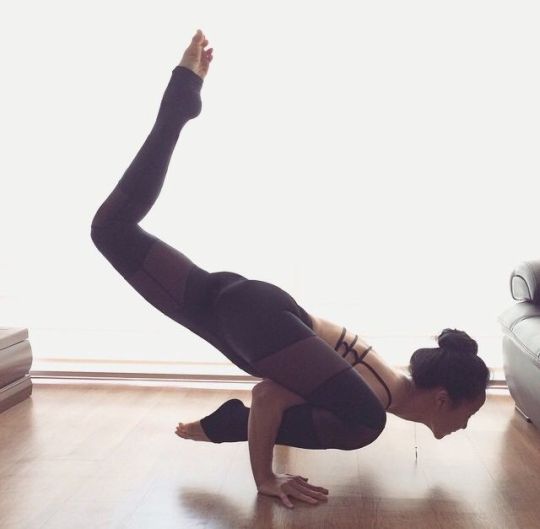
I think everyone was internally crying but also appreciated being invigorated and challenged for the day. For me, it was partially a flow state but also a way of taking care of my body through engaging in physical activity that was strengthening and energizing. Once I got out of yoga I decided to meet up with my boyfriend to get something to eat. We went to whole foods because I was craving the veggie burger they have at their coffee & burger bar. I’m a vegetarian and usually don’t like meat substitutes but the texture and taste of this veggie burger is a lot like meat and is really good. After dancing and doing yoga I was really excited to eat:

It was delish!
Once I finished eating I went to the Frist Art Museum to meet up with my best friend Sami and look at art together. He ended up getting there 15 minutes before they closed so I spent most of the time looking at the art alone, but I didn’t mind. On the first floor there were just an inordinate amount of aristocratic style painting of horses and dogs. They were well painted, but I honestly was cracking up at them.
Here are some below:

Pup family reunion.
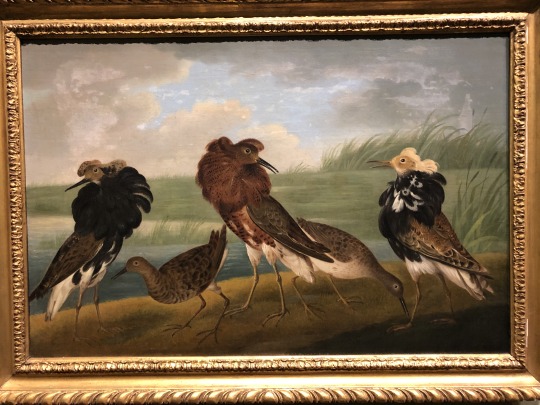
Birds looking down with contempt at us uncultured swine!
or Four Birds With No Scone

I really don’t know.
Once I finished looking at all the paintings on first floor I went up to the second floor to see the photography exhibit of Dorthea Lange. This was the total opposite of my experience of the first floor paintings because the pictures were so deeply moving. Dorthea Lange photographed a lot of people in the Great Depression era and looking at the portraits of each of the people she photographed gave me a kind of out of body experience. To see people photographed so crisply almost 100 years ago gave me this sense of wonder of all the people who have been alive and experienced their own worlds. I really felt the the photos she took of these people immortalized them, even if she didn’t have their name or a story to go along with them.
Here are some of her photos:

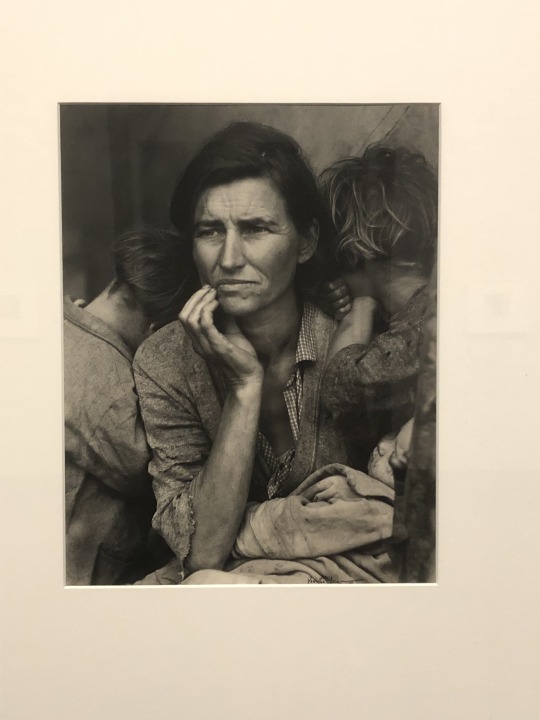
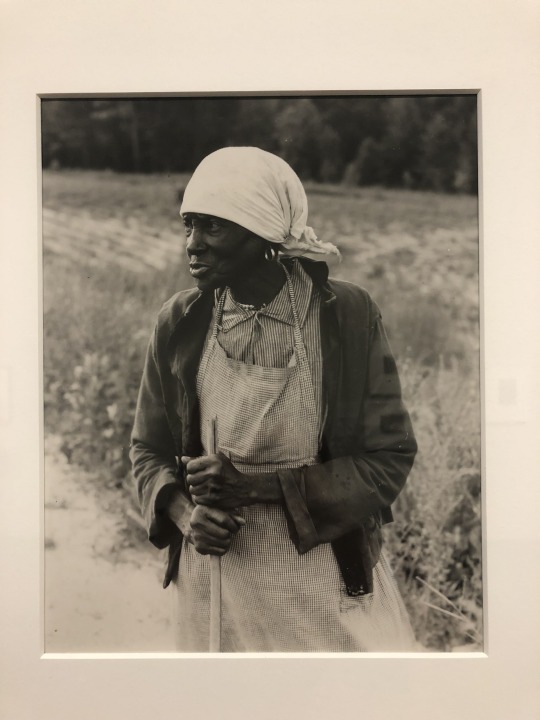

Since Sami ended up coming too late in time to really look at art with me, we ended up just sitting in my car talking and joking for a couple of hours. This was arguably the best part of my whole day. He’s one of my two closest friends and whenever we’re together we always have a deep heart-warming talk followed by utter wackiness. He told me about how he was having this creative pen pal romance with this girl we went to high school with who now lives in New York. They’ve only been talking through email and they’ll send each other a lot of messages in Spanish to decode as well as collages, videos and other art. It was really inspiring for me to see that kind of creative way of interacting with others. I think over the summer I’m going to send my good friends spontaneous letters in the mail with collages and poems. Relationships are so important to me and if I’m able to enact these little creative love expressions I think that would really incorporate the happiness activity of cultivating relationships and create a lot of tangible meaningful memories.
I’m not sure how we got into our next topic but we started ironically talking about how Sami should just take the genre of mumble rap to the next level and just start rapping nonsense - just sounds with a word thrown in here or there. Somehow he has perfected the art of the annoying japanease boy band singer and this was the foundation of his mumble rap sound. Then I guess I joked about how he should just yell a word that seemed so out of context like “GUMBO!” and he started doing it and created a mumble rap around exclamations of gumbo. I know this probably doesn’t sound funny at all but we were literally CRYING laughing. It was so ridiculous and I think we both share a sense of humor for absurdity and irony. Once we had our sound down, I started talking about how he needed to talk about his raps when being interviewed. His raps didn’t need actual words, they were transcendental, they existed beyond our worldly perception of music and poetry and brought us straight to the essence of God. We both envisioned the dream of a giant crowd of people singing along with him at a festival, sounding like a plethora of various whale sounds. It was beautiful. And hilarious. And when summer hits we’re gonna record our first song ‘shawdy want gumbo’ - my family lives in New Orleans and I visit a few times a year so I’m going to snap the cover art - a picture of gumbo, maybe with his face superimposed on there too. I recorded him just yelling gumbo as a receipt for this beautiful conversation, but I don’t know how to add it to this post. I’m glad I recorded it though, because anytime I listen to it randomly I crack up laughing.
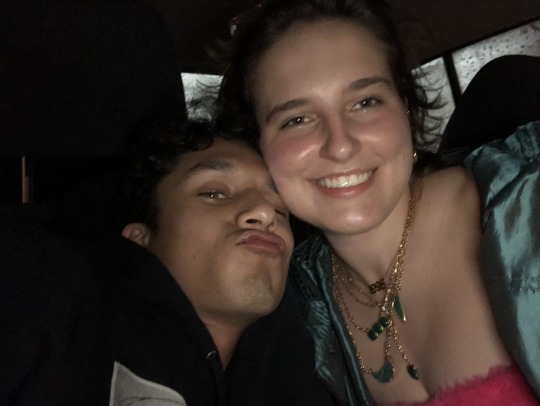
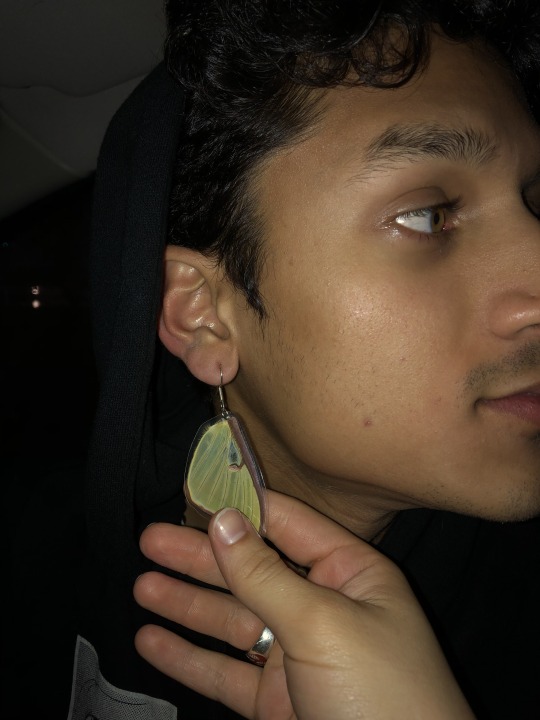
just a cool earring!
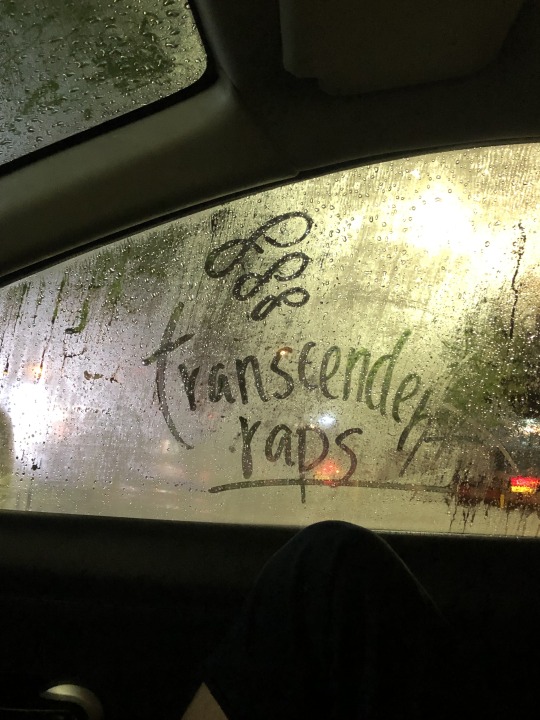
The last part of my day was pretty spontaneous as I was planning on going home after hanging out with Sami. My boyfriend called me and told me that one of our friends Julie had just gotten engaged and they wanted to go celebrate at Dave & Busters with us. They had already drank a lot of champagne at their dinner so we went to go pick them up. They were both super happy and Julie was showing me her ring and they were talking about the proposal.
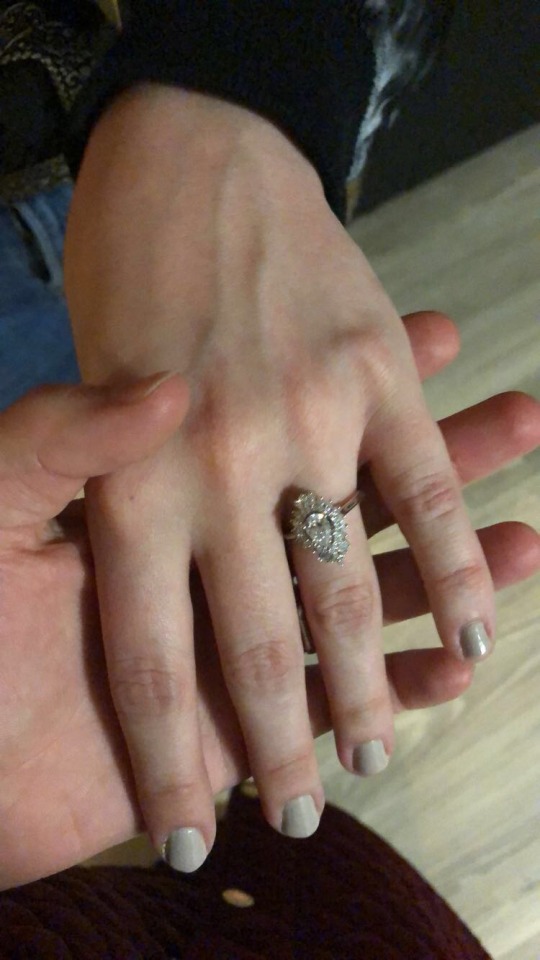
(Also, she has a pet pig.. a video of whom I will post separately)
Lucky for me, my boyfriend is this insane luck magnet whenever we go to Dave & Busters. I mean, he always scores a 1000 ticket win. It’s insane.
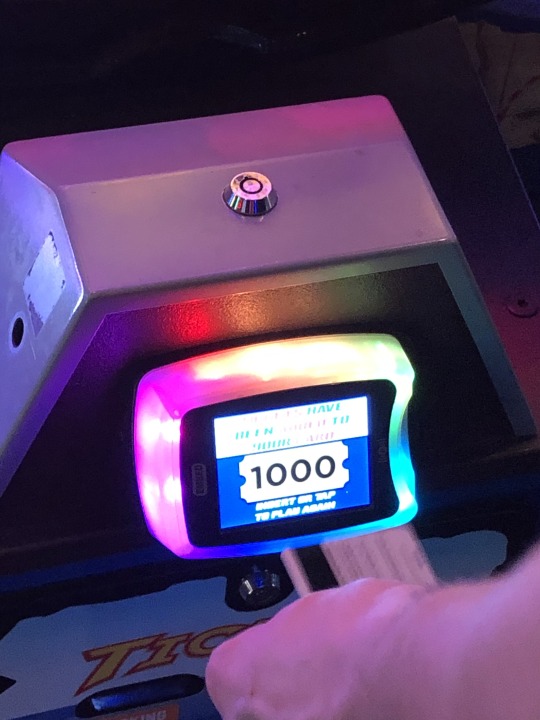
We played a lot of games together, it was definitely another workout - especially with the basketball hoop games and air hockey ( I was fierce). It also made me really happy to see people all enwrapped in love and become engaged. I’ve never had close friends get engaged so it was a new experience in that way to celebrate with them (P.S. they’re about 6 years older than me - so they didn’t get eloped or anything).
Heres a photo of them loving and protecting each other from enemy spacebugs:

Once we were cashing in our tickets, I got Julie a “Future Mrs.” tiara, which was comically trashy, but they had lost their card with all their tickets on it so I wanted to use mine to get her something to commemorate her night, in the raw essence. Then we took Julie and Taylor home and I DJ’d some love related songs for them, which they pretty passionately yelled along to, so it was a good move. After that I headed home back to my cats to crawl in bed and process my best day! And sleep, of course. All in all, I’m so grateful for this project because without it I may have not even had this day, and all the hilarious and beautiful memories. This day was so enriching and uplifting for me and reminds me to take some time to just enjoy life. Unfortunately, after writing this whole blog up my computer died and the whole thing was deleted. I was pretty furious when it happened, but I just realized there was no other choice to accept it so I decided to use the happiness activity of cultivating optimism. Not only did I get to relive my best day once, but twice over, and I’m grateful for that.
1 note
·
View note
Text
Blog #4
In this section, Sonia lays out the “Five Hows” behind sustainable happiness, the hows being the mechanisms by which you can successfully engage in the 12 happiness activities in her book.
The first how is positive emotion:
Sonia states that real happiness in life is maintained through sprinkles of happy moments throughout time rather than big sparkling events. She posits that her happiness activities create that desirable cascade of happiness because the positive emotions generated by them can be engaged and reengaged in a way that gives to a continual flow of happiness. The weird example that came into my mind that visualizes what Sonia is saying is that if you're at a water park, and water signifies happiness, you will probably experience more happiness on a huge winding water slide than being immersed in the bucket of water in a dunk tank.


At least that’s what I’d find more joy in. A quote I really liked that Sonia used was by Barbara Fredericton, “moments of pleasure don’t just make you feel good, they broaden your horizons and build your social physical and intellectual skills.” I agree with this wholeheartedly (I’ve experienced it myself) and to me it signifies how important positive psychology is because happy feelings aren’t just hedonistic, they change your life and give you a new vision. Sonia also talked about how there was this study where UK researchers analyzed when women recovered from depression and that this recovery was often prompted by the positivity elicited by something that gave the women a sense of a “fresh start” - As someone who was majorly depressed in high school, starting college was the instance for me that gave me a sense of a fresh start and let me leave that depression behind completely, which makes me wonder if the environment where one experienced depression can affect recovery, if that person stays or leave the environment. The second how is optimal timing and variety: In the section, Sonia talks about how the timing of happiness activities is really important, and considering the frequency and duration of such activities is important in order to thwart hedonic adaption to those positive feelings. Additionally, she talks about the importance of variety in activities that promote happiness and how its been supported by empirical and anecdotal evidence to keep people happy and stimulated. She incorporates a quote form a novel she read that says, “to be happy you have to find variety in repetition.” This quote reminded me in my own life of the practice of yoga. I’m in a yoga teacher training right now and we were recently talking about how yoga is a practice of meditation first before physical practice, and that the poses are ultimately to create space to still your mind and let your emotions move through you. It’s interesting because I practice yoga everyday, and there is some familiarity in it each day with the poses, but I always feel differently each time I practice and I think it’s a great way (for me) to experience variety in happiness.


The third how is social support:
Sonia talks about how social support is a wide ranging mechanism to increase happiness because it’s so innate to be socially connected to people as humans, in multiple and varying ways. She highlights how social support is really useful when you go through life challenges and misfortunes, but also helps you to realize your goals and support you in life’s joys as well. Social support or lack there of can make a big difference in short term and long term goals as well as attainment of happiness.
Cats also find happiness through social support:


The fourth how is motivation, effort, and commitment:
Sonia talks about how motivation, effort and commitment are helpful in attaining happiness because they give you a sense of mastery which can transport you to new opportunities. She states that commitment is the hardest of the three but without it, the journey to happiness will be brief and unrewarding. The more motivated you are towards a goal, the more likely you will attain that goal, because the more likely you will invest effort. She also talks about how people feel their too busy to engage in happiness activities, but that really the happiness activities can be incorporated easily into everyday life to help you slow down and smell the roses. I like how she frames backsliding in happiness attainment, because usually when I think of working towards goals I think there is inevitably some failure that you have to accept and move forward from. However, when I think of happiness, the word ‘fail’ doesn't seem to fit. I don't think you can fail happiness. It’s more facing natural challenges that arise in that attainment and re-centering yourself towards your goal.
The fifth how is habit:
The attainment of happiness requires a lot of effort at the beginning, but this effort lessens over time as the effort become habit. Sonia posits that habits are not intentional acts, they don't require a decision to do them. The behavior you engage in transforms from controlled processing to automatic processing. One of the examples of a habit Sonia mentioned that I liked was to appreciate your life during the bad moments. It’s of course really easy to have a pity party or be self destructive in how you deal with bad moments. I’ve found though that appreciating your life in those moments can really give you a sense of personal strength and resilience. Appreciating those moments can also help you to make much better decisions in the moment and for the long term.
Postscript: If You Are Depressed:
I’m glad this part was included in the book, because even if recognizing your depression is not a happiness activity, if you are depressed it’s the first step to growing happier. Though I’m not at all depressed anymore, it’s something I very intimately knew when in high school so its useful to reflect on and to empathize with those who may be depressed. (I also feel like I’ve talked about it in every single blog, so sorry for the monotony 😬) My favorite part of this section was the bit on psychological vulnerability which expresses that some people have dysfunctional attitudes and beliefs that make them more vulnerable to depression. I think a lot of these come from family of origin issues or cultural beliefs. Some of the examples were the belief that our self worth hinges on being perfect or on other peoples approval. I’m sure it’s natural to, but I still subconsciously have that perfectionism belief, depressed or not, as well as basing my self worth on how much I can help/care for people (which sounds good but makes my life kind of dysfunctional). Another example is hopelessness theory, where you expect bad things to happen and good things not to happen. I felt this a lot in the thick of my depression, but I actually rarely feel hopeless now, I suppose because I’ve cultivated optimism throughout the years (plus some other positive life factors sprinkle in). It’s interesting how those some of these dysfunctional beliefs can still exist quietly, though you feel a lot more functional and happy. I think it’s ultimately just a process of growing into a better healthier version of yourself, and creating happiness throughout life as it comes.
0 notes
Text
Blog # 3
Picking up where we left off ~ In chapter 7-9, Sonia resumes sharing more of her empirically based methods to achieve happiness, those being - increasing flow experiences, savoring life’s joys, committing to your goals, practicing religion and spirituality, and taking care of your body via meditation and physical activity. And the more I read this book the more I wish it was mandatory reading because it’s the most practical and easy-to-read happiness achievement bible ever. While reading the first section on increasing flow experiences, my boyfriend was practicing his bass next to me, which in turn was fueling my own flow experience reading. It was like a nice internal but mutual symphony of flow states. As a musician, I’d say performing music and practicing his instruments is the very definition of his version of flow. For myself, writing, dancing, hiking and reading are probably my versions of flow states. One of the most useful subsection of increasing flow experiences for me was the “flow in conversation” section. Though I can have flow in conversation almost anywhere else in my life, when I’m in a school setting all of my social anxiety ramps up and my ability to have a genuine conversation just kind of dissolves. I don’t know why the school setting gives me such anxiety but I really liked Sonia’s advice of when in conversation, “focus your attention as intensely as possible on what the other person is saying and your reactions to her words.” I feel like this is a form of mindfulness in quelling your inner anxious voice by fully feeling and savoring each moment of an interaction. Another interesting tidbit in this section is the “smart leisure” section. Sonia points out that if you're not focusing or using your skills much during leisure time, then you're unlikely to be in a flow state. This was a bit of an eye opener for me because I realized that decompressing and chilling out via looking at my phone is (not only stressful) but isn’t really engaging my skills or true focus at all- and is honestly a time sucker for the activities I’d actually like to be developing and experiencing flow states in. In the next happiness method, savoring life’s joys, theres a piece of advice that I really resonated with, “Strive to bask in the feeling of accomplishment when you’ve finished a task at home or work, rather than distractedly moving on to the next item on your to-do list.” Because I’m so busy everyday and have so many things to do from when I wake up to when I go to sleep, I tend to sometimes get depressed over then endless monotony of always having some kind of responsibility to fulfill. Sometimes I’ll write encouraging notes next to the assignments I completed in my planner (nerdy, I know) to give some recognition to myself. I want to do this more though possibly by just taking a 5 minute break in between tasks to just bask in the fact that I finished something and I should keep hope.
0 notes
Text
#2
In chapters 4-6 of The How of Happiness, Sonja details several of the happiness activities she briefed us on earlier with examples and methods in how to enact them. The first one of these being expressing gratitude, which research suggests boosts happiness in eight ways: helps you to savor positive life experiences, bolsters self-esteem and self worth, helps you cope with stress and trauma, encourages moral behavior, helps build and strengthen social bonds, inhibits invidious comparisons with others, diminishes negative emotions, and thwarts hedonic adaptations. In my own personal life, expressing gratitude is definitely the most natural and happiness inducing activity to me. I think because I’ve experienced some significantly traumatic experiences, the base emotion of resilience I’ve enacted is where my gratitude grows from. I think in some small form or another, everyday I feel some form of gratitude for living the life I’m living because it’s always filled with so many beautiful lessons. On the other hand, I remember when one of my friends was in a really difficult time in his life, I sent him this article with questions that prompt you to answer what you feel gratitude for in your life, and he felt it was useless. It’s interesting and goes to show that not everyone gleans the same perspective from an idea or experience. The second happiness activity is cultivating optimism, which Sonja explains can be enacted as little optimism (which is basically behaving in constructive ways to specific situations), big optimism (which is more so an overall feeling of vigor about life), and very little optimism (which is just the belief that you’ll make it through the day, or through life, despite setbacks). The examples Sonja gave for the different types of optimism were pretty funny, little optimism being,” My flight tomorrow will arrive on time” and big optimism being, “We are on the threshold of a glorious age.” (I have to remember to start saying that one more often). Another activity is avoiding overthinking & social comparison. Research supports that overthinking or “self focused rumination” doesn’t actually solve problems but hinders concentration, initiative, motivation and tends to make you feel worse than if you engaged in a healthy activity to distract your mind. Upward comparisons (ex. “She’s more successful”) lead to feelings of inferiority, distress, and loss of self-esteem while downward comparisons (ex.“He just got laid off”) lead to feelings of guilt, the need to cope with others’ envy and resentment, and fears of suffering the same fate. A prime example I had of social comparison in my life was when I was at work one day and there was this new coworker who was telling me about her life - she had just graduated college, had an internship with one of my favorite radio stations, had a nice apartment downtown and just a super outgoing kind personality. I found myself subconsciously thinking “Dang…she really has her life together…I wish i was at that level,” basically upwardly comparing myself to her. As we talked more deeply though, she opened up to me a bit more and told me her boyfriend was in jail and she had to have 3 jobs to keep up with the bills to talk to him. I had gone through the exact same situation as her just a year earlier so I was able to empathize with her and we both were able to vent with another person who understood the situation. In the end we both agreed that you can never know what a person is going through, so its better not to judge and useless to compare your own life to theirs.
The next activity Sonja mentions is practicing acts of kindness, and in this activity she specified that it’s important to have optimal timing and variety in your types of kind acts. She also mentioned that practicing acts of kindness can start a chain of kindness through several individuals, so it’s a win-win! My most consistent acts of kindness show up when I nanny, as I nanny this couples daughter several times a week. Just taking care of a small human for a handful of hours is exhausting, so I can only imagine having to do so every moment of the day. So I always take the family’s trash out, do their dishes, and straighten the tornado of toys that the baby strews around the house, even though they don't ask me to, so that they can come home to a peaceful environment and have more time to rest. Of course I’m paid to watch their daughter, but I try and go the extra mile to make the parents lives less hectic by cleaning while she naps!
The fifth happiness activity is nurturing social relationships, strategies of which include: making time, expressing admiration/appreciation/affection, capitalizing on good fortune, managing conflict, and sharing an inner life. This is another activity I really am drawn to, and it made me reflect on some of my best friendships. I think me and my friend MJ have the quality of sharing an inner life, as we have similar dreams and hopes for the world and enact this by supporting each others art. About 6 years ago, MJ and I were talking about the lush inner world that exists when being an introvert, but how this depth isn't apparent on the surface of our personalities. So MJ made these egg sculptures with faces in them, and you put them on your ears and they have this ocean wave sound effect like a seashell. And the premise is that these little egg creatures whisper into your ears and join the lush inner part that exists inside introverts’ heads. I’m sure that sounds totally bizarre, so I’m dropping the pictures of me sporting these eggs:



Flash forward to a month ago, and I was sporting another set of MJ’s sculptures, which has become an existing ritual among us and our friendship, and definitely nurtures our bond.


The sixth happiness activity is developing strengths for coping. Sonja explains how there are two different types of coping, problem focused and emotion focused, which are both valuable but whether to use which depends on the situation and person. The strategies laid out for developing strengths for coping are finding meaning through expressive writing, construing benefit from trauma through conversing, and coping via thought disputation. Finally, the last happiness activity mentioned in these chapters is learning to forgive, which basically laid out the qualities of how to forgive including appreciate being forgiven yourself, write a letter of forgiveness (optional to send), and ruminating less. The part I liked about this activity is how Sonja highlighted that forgiving is more so for yourself than for the person you're forgiving, because it helps you to let go of negative feelings and move forward. The quote by Nelson Mandela, about how he was able to bring himself to forgive his jailers, exemplified this notion eloquently, “When I walked out of the gate I knew that if I continued to hate these people I was still in prison.”
0 notes
Text
#1
The primary take home points from the first section of “The How of Happiness” all lie in the simple, unevenly cut, empirically based pie. There are only three slices to this pie but the good news is that you get the second biggest piece, and how you eat that piece will determine your fullest potential of happiness on this earthly plane. Who knew?
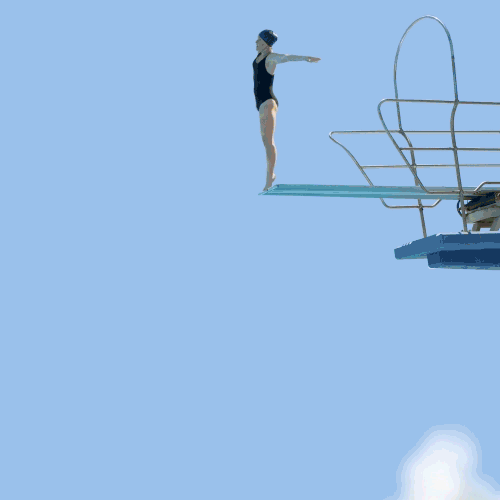
According to Sonja Lyubomirsky, fifty percent of our happiness lies in our “set point" which is basically a specific point on the happiness continuum that we genetically inherited from our family and in which the baseline of our happiness will remain over the course of our lives. Ten percent of our happiness lies in the circumstances of our lives and forty percent of our happiness is in our hands via our behaviors and thoughts. Sonja also lays out some prominent happiness myths, that which include that happiness must be found, happiness lies in changing our circumstances and that you either have happiness or you don’t. Sonja then highlights the notion of matching an individual to the right activity in which they could increase and create their happiness through her Person-Activity Fit Diagnostic Test.
In analyzing the relevance that these chapters have to my own journey and creation of happiness in my life, I’d have to say that this book feels very resonant to my experiences but also raises some interesting questions. Though I couldn't exactly tell you if I have the depression gene or not, my set point of happiness could be determined considering my own major depression as a teenager, my dad’s depression throughout life and even my paternal grandfather who committed suicide from his unfortunate experience with depression. Conversely, I scored a high 6 on the subjective happiness scale and feel confident enough to say that I will probably never feel the debilitating depression I felt when I was younger ever again. This is because one of the phrases I live by is “happiness is an inside job,” and I’ve learned that I largely control my happiness through what I choose to do and think. A question I would raise it whether the set point that is hereditary will shift up and down the continuum throughout generations or is the point fixed eternally?
An interesting theory Sonja pointed out through her examples is that people whose childhoods were traumatic or chaotic often scored high on the subjective happiness scale later in life, yet those whose childhoods were peaceful seemed to see their current life as filled with problems and believed last true happiness they knew was within their childhood. (I’m sure it’d be frustrating as a parent to read that providing a peaceful home for your child would ultimately probably lower their level of happiness in life.) As someone who experienced a less than peaceful childhood, it seems counterintuitive that would help me be as happy as I am today. But it also makes sense, because I think adversity can increase gratitude in many situations.
One of the most compelling notions Sonja mentioned was that we as humans generally think that wealth, fame and beauty will bring us happiness. In my own experience it seems like so many of the people I’ve grown up with believe in those drivers for happiness and I think it’s largely because of social media and the messages it drills into you. I have several friends who, even subconsciously, chase fame and wealth because thats seemingly the standard these days. Yet they seem to overlook the the fact that money and being known won’t pull you out of an emotional rut if you don’t change your behavior rather than circumstances. Insert pop culture example: even Cardi B has said she used to be way happier before she was famous and rich, yet thats what she was chasing to be happy.

Another friend I have moves every year to a new city and comes back to tell me how unsatisfying it all is and that there’s somewhere better. It goes to show that what we think makes us happy in our society is only instant gratification, and we ignore the role our emotional and mental selves play in our happiness.

0 notes